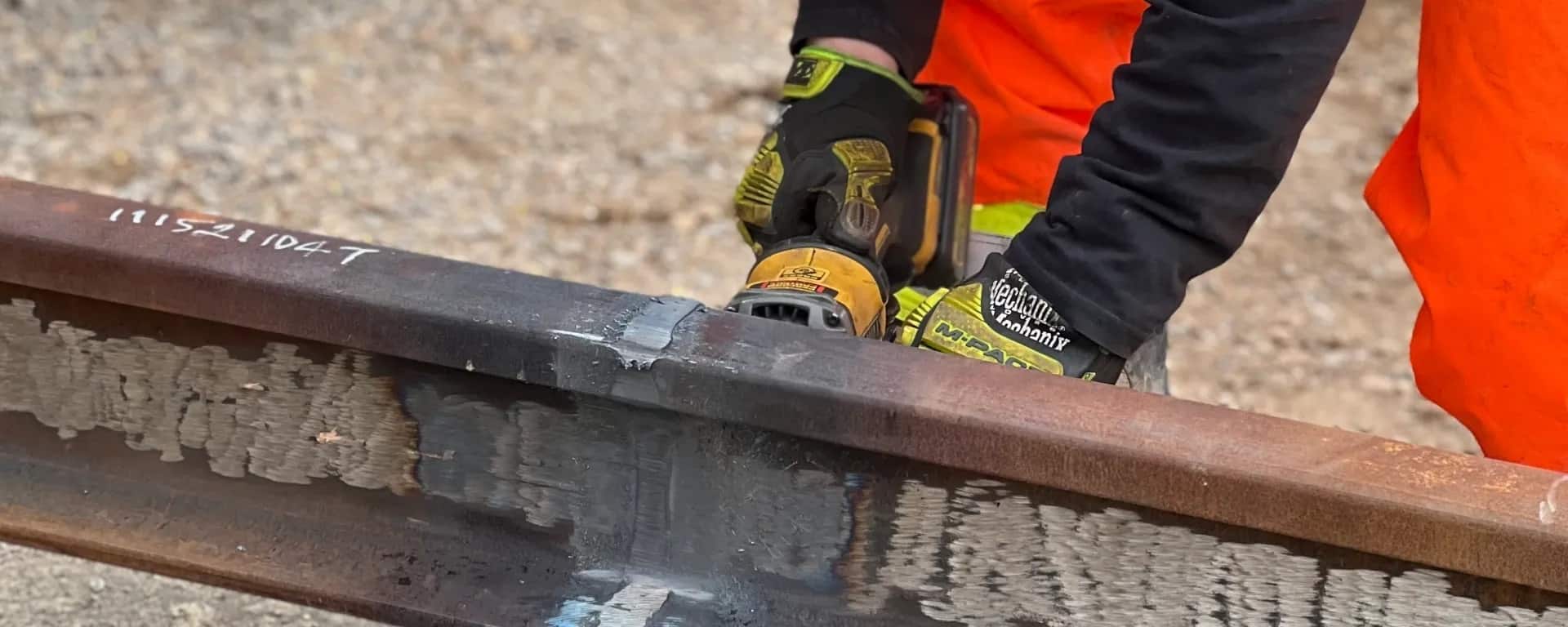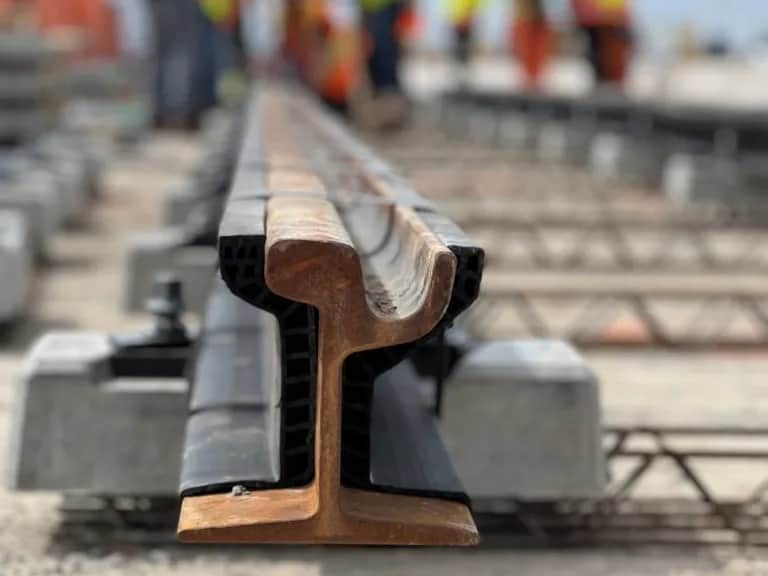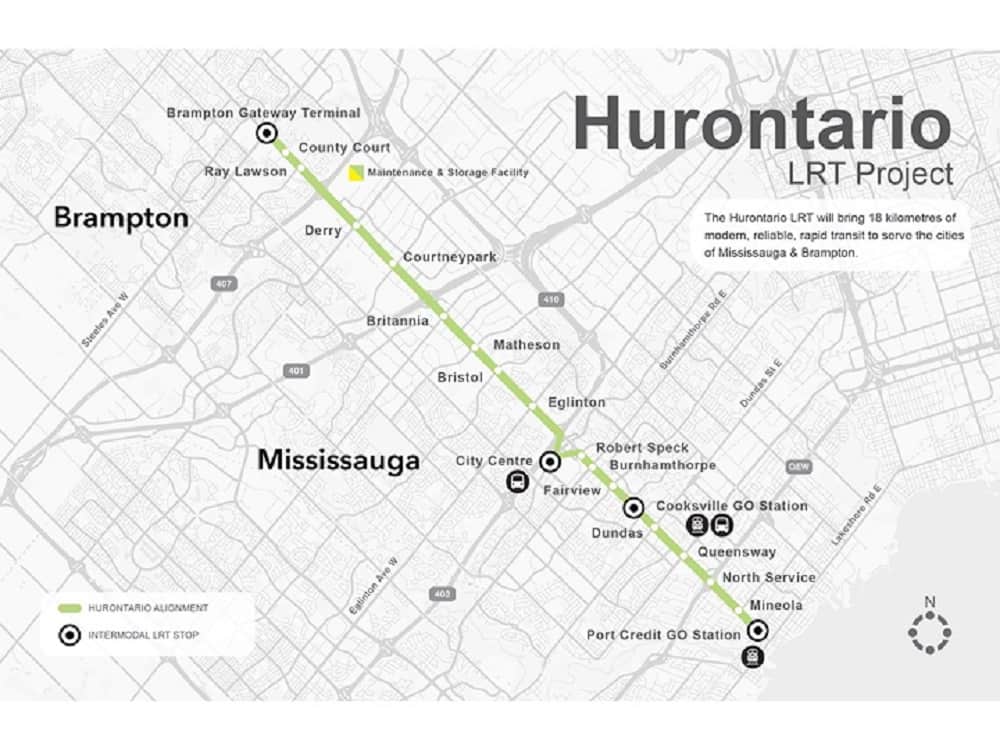Laying the tracks for major Mississauga-Brampton transit line is no simple task
Published May 5, 2022 at 10:23 am

Laying train tracks for an 18-kilometre light rail transit (LRT) route that, when completed, will take passengers from south Mississauga all the way north into Brampton is no simple task.
Those in charge of the huge Hurontario LRT project say getting all the pieces of the tracks into place, a process that began last week, “takes some specialized workers and equipment to make sure the job’s done right.”
Project officials say a lot of energy goes into laying down the sections of track.
“It’s not as simple as taking them off a truck and snapping them together like LEGO blocks,” say officials with Metrolinx, the provincial transit authority in charge of the massive project that’s expected to be completed in fall 2024.
The first tracks were installed last week at what project officials call the “nerve centre” of the rapid transit route–the Operations, Maintenance and Storage Facility located just south of Hwy. 407 on the Mississauga-Brampton border.
Work at that location continues.
“Crews are connecting pieces of track at the maintenance and storage facility…using a technique called long-welded rail (LWR),” Metrolinx says. “So far, 12 LWRs have been created inside the maintenance and storage buildings, the longest being 140 metres long.”

This is where things get a lot more detailed, project officials note, as they explain the two types of welding being used to connect sections of track.
“One is called aluminothermic welding, which is where molten steel is poured into a mould surrounding the gap between rail ends being joined,” they say. “The other is known as flash-butt welding, which works by making small contact between the components using a high voltage current to melt the steel.
“Sometimes transit building is all about heavy machinery and engineering marvels. Other times it’s the finer details.”
The maintenance and storage facility will serve as the hub of the LRT route, which will be known as the Hazel McCallion Line when it opens to passengers in late 2024.
The huge site will house a repair shop, a vehicle cleaning facility and material storage space, when completed. It will be able to accommodate 42 of the light rail vehicles at a time.
Last week’s laying of track marked an important development as the project moves forward, officials say.
“Rapid, reliable and environmentally friendly light rail transit is that much closer to being realized from Mississauga to Brampton and all the connections in between,” said Devin McAndrew, superintendent with Mobilinx, constructor of the LRT. “Track installations are starting at (the storage facility), with crews moving out to Hurontario, then north to Steeles, and south to Port Credit and all the way up the line.”

When completed, the LRT will take passengers from Port Credit GO station in the south all the way north into Brampton, with 19 stops along the way.
As the lone underground stop on the route, Port Credit GO saw a significant amount of prep work in 2021, and tunneling work continues there this year.
Ontario Premier Doug Ford announced earlier this year that, when completed, the public transit route will take the name of Mississauga’s former longtime mayor, and be known as the Hazel McCallion Line.
Also at that time, Ford voiced support for once again including a City Centre loop in the huge project.
The Hurontario LRT will link to GO stations at Port Credit and Cooksville, the Mississauga Transitway, Square One GO Bus Terminal, Brampton Gateway Terminal, and key MiWay and Brampton Transit routes.
Metrolinx says the initiative is part of its long-term vision for an integrated, sustainable transit network connecting the Greater Toronto and Hamilton areas.
INsauga's Editorial Standards and Policies


